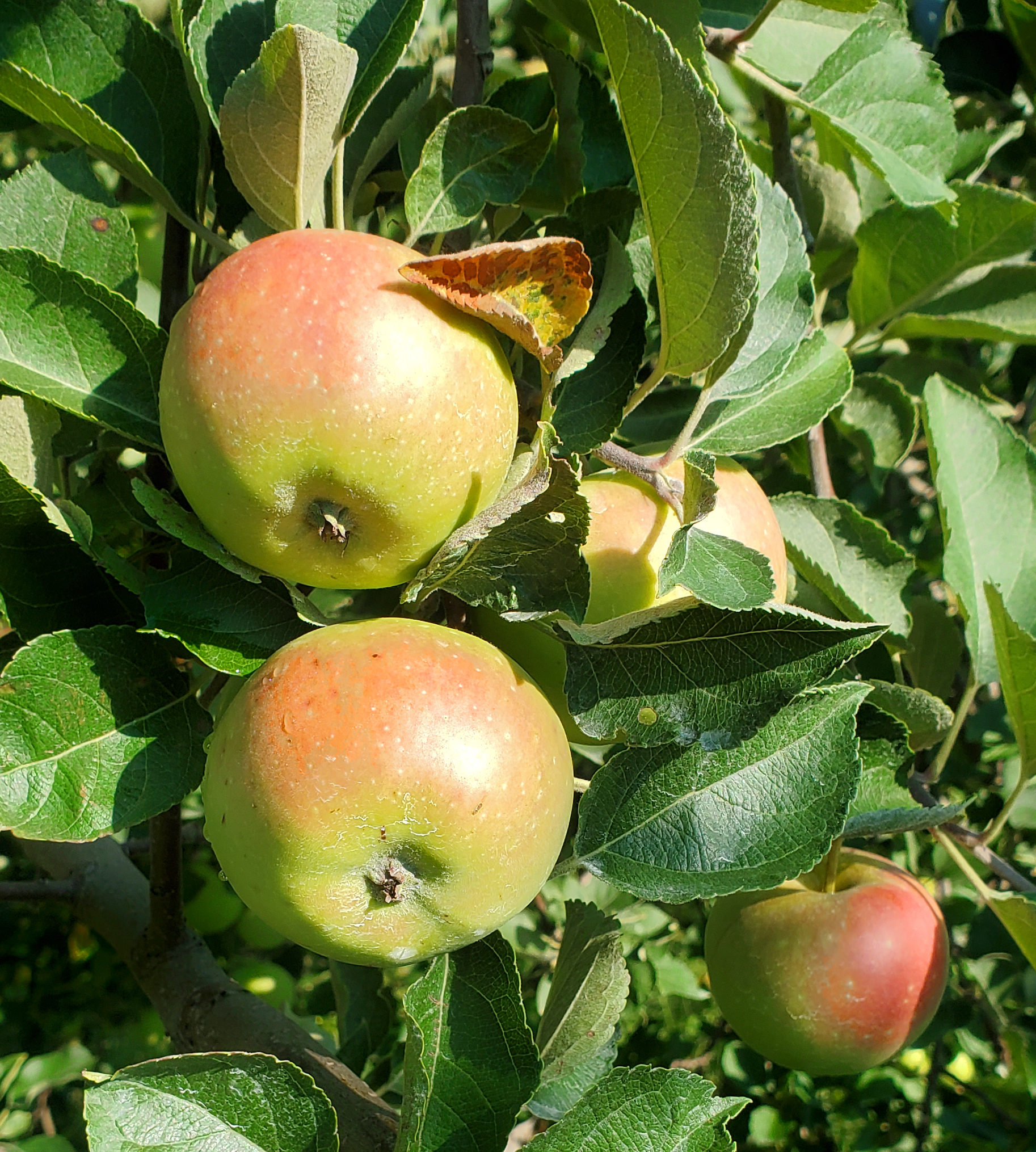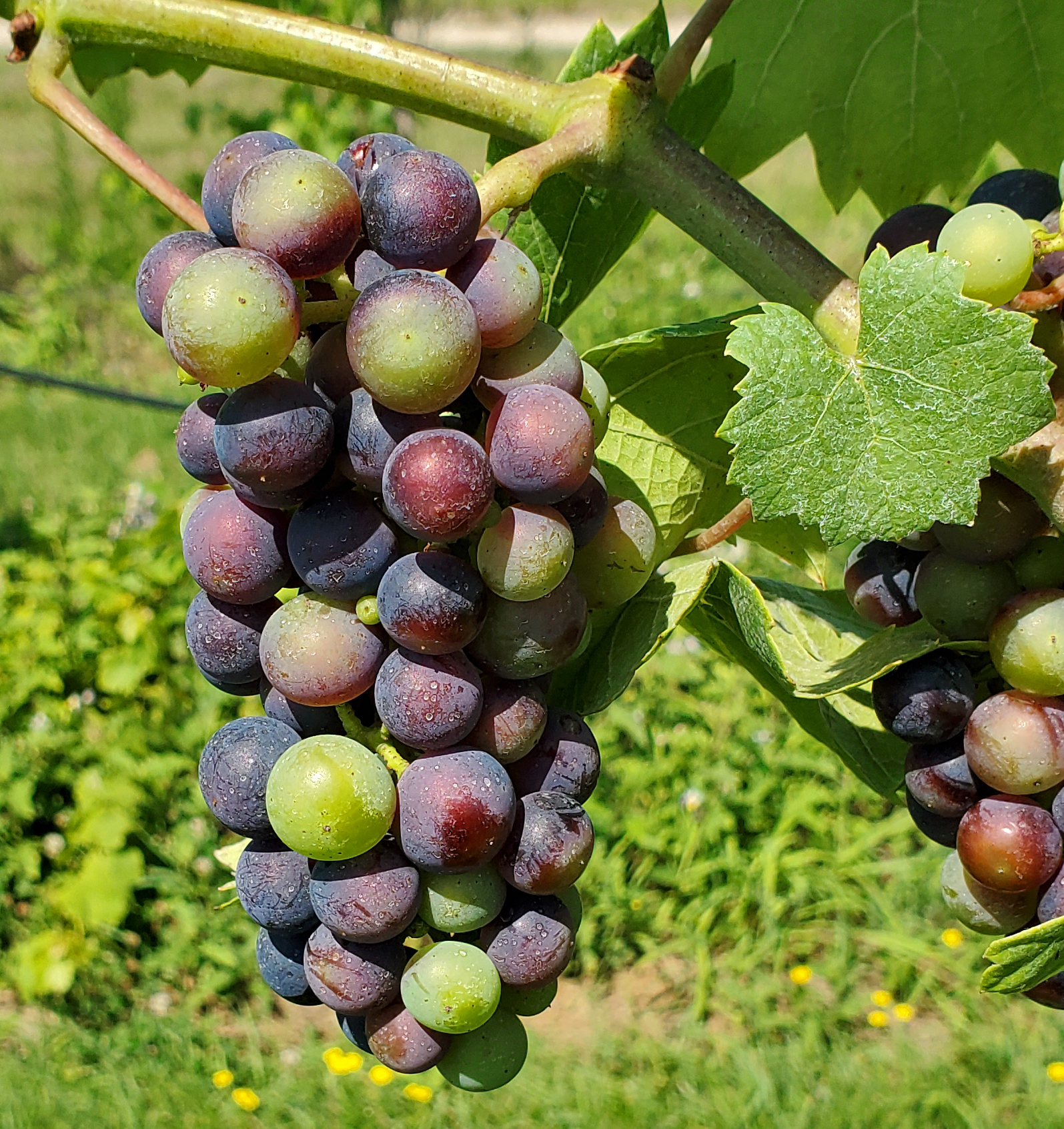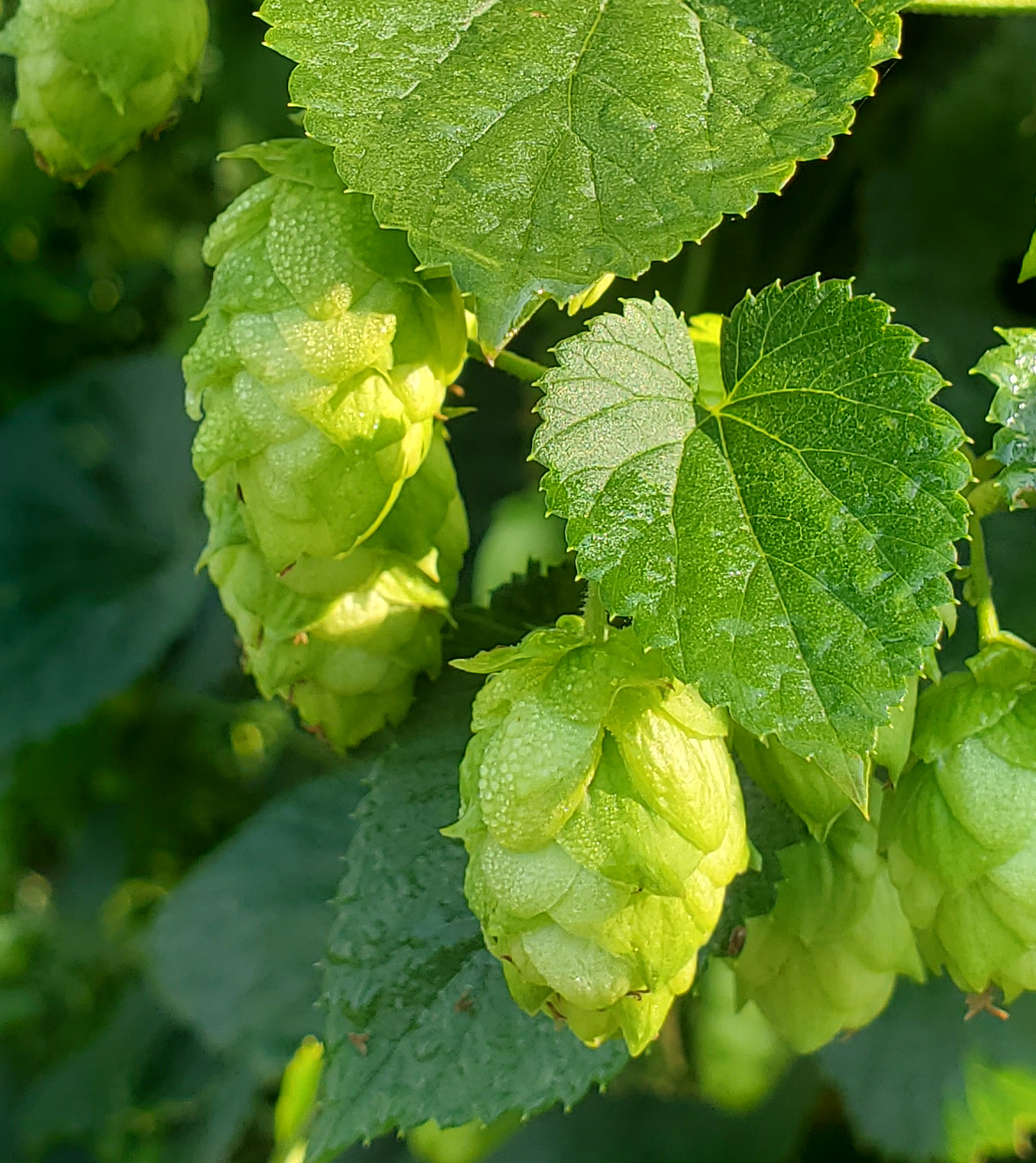Southwest Michigan fruit update – Aug. 3, 2021
Grapes are beginning veraison. Summer fruit harvest continues.

Weather
Last week started hot with high temperatures near 90 degrees Fahrenheit. A cold front entered the area on Thursday. Many areas saw between 0.25 and 0.75 inches of rain. Highs for the rest of the week and weekend were in the low 70s.
The temperatures will slowly rise through the week with this coming weekend seeing high temperatures near 90. The week should be dry.
With a seasonal week, we picked up a below average number of growing degree days (GDD) last week: 203 GDD base 42 and 148 GDD base 50. July was 66 GDD behind the five-year average for GDD. We are still 58 and 47 GDD ahead of the average for the season, respectively.
|
Southwest Michigan GDD summary from March 1 – Aug. 1, 2021 | |||
|---|---|---|---|
|
Station |
GDD 42 F |
GDD 45 F |
GDD 50 F |
|
Benton Harbor (SWMREC) |
2723 |
2370 |
1835 |
|
Lawton (Lawton) |
2730 |
2374 |
1828 |
|
Fennville (TNRC) |
2486 |
2146 |
1635 |
|
Average for the SW region |
2685 |
2334 |
1800 |
|
Average last week |
2482 |
2152 |
1652 |
Tree fruit
San Jose scale trap catches of males are still high. Japanese beetle populations are falling.
Apricot harvest is winding down. Ripening fruit has increased susceptibility to brown rot.
Redhaven peaches and others in this harvest window (PF9A-007, Starfire) will be starting up soon in central Berrien County. Western flower thrip populations are building up, causing circular brown discoloration on peach and nectarine skin. Brown rot is becoming more common on peaches from insect feeding damage and rain-induced skin cracks. Twospotted mite populations are building up on leaves of some young peach plantings in sandy sites. The feeding damage is generally seen on the underside of leaves, close to the veins. The current oriental fruit moth flight is declining, with another to begin later in August.
Cherry harvest is completed. Cherry leaf spot management is the primary disease concern at this time.
In plums, Vanette and Ozark Premier are being harvested on some farms. Earlier hot temperatures caused sunscald or heat damage to early season yellow Japanese plums, appearing as large dark spots. Spotted wing Drosophila (SWD) can be a problem if fruit are kept on the tree until soft.
In apples, due to early warm temperatures this year, apple harvest date predictions are ahead of normal. In warm years, Gala usually ripens before McIntosh. Retain treatment for harvest management timing should be timed accordingly. Symptoms of sooty blotch and flyspeck are starting to show up on apples with weak summer fungicide programs. Flight of codling moth is increasing. The current generation flight of oriental fruit moth is finishing. Woolly apple aphids are flying, resulting in aerial colonies in branches of many varieties. San Jose scale red markings are common on fruit in some orchards.

In pears, pear psylla populations are continuing to grow in some orchards. In some cases, honeydew from high populations can turn into heavy patches of sooty mold. This can discolor fruit and reduce the tree’s ability to photosynthesize.
Small fruit
SWD numbers are rising. Catches in traps being monitored by the Michigan State University Extension fruit team have increased five-fold from last week. Males are starting to be found in significant numbers in traps. Male SWD are easier to identify because of the black spots on the wings. Check out this guide for identification.
In grapes, some red grape varieties are beginning to show signs of veraison. Early varieties such as Marquette are nearly complete. Others, like Tempranillo, are just beginning. For grape berry moth, May 25-27 can be used as general dates for wild grape bloom in southwest Michigan. This is used for determining grape berry moth biofix.
According to the grape berry moth model on Enviroweather, egglaying of the third generation should begin this week. Pesticides like Intrepid and Altacor that target eggs should be applied as soon as egg laying begins. Other insecticides targeting the newly hatched larvae should be applied 100 GDD base 47 later. This is usually about five days in summer conditions.
Protectant fungicide sprays to control downy mildew and powdery mildew are the management focus before harvest. Downy mildew symptoms can be found in susceptible varieties. Heavy dews every morning and wet humid conditions are excellent for this disease. Late July and August are when growers should be focused on preventing this disease, which can defoliate the vines before harvest.
With the beginning of veraison, the threat of black rot symptoms in fruit is past. Wine grape growers will want to include botrytis in their disease management plans, especially in tight bunched varieties. Ensure fungicide residues are in the interior of the cluster. Several reports of botrytis in vinifera grapes have come in already.

Blueberry harvest of Bluecrop is winding down and growers are moving to later varieties such as Jersey. Fruit size is generally excellent. Soft fruit problems from heavy rains in June and early July have passed. Disease control focuses on protecting fruit from anthracnose and alternaria. Protecting green fruit is easier than stopping infections on blue ripening fruit.
SWD numbers are increasing. We are seeing a typical August surge. Growers should trap for SWD. Growers who sample ripening fruit report finding increasing numbers of larvae. Growers need to decrease treatment intervals to protect their fruit.
Strawberry fields are showing good regrowth after renovation. Strawberry root weevil is starting to show up in some sites. The best time to target this insect is when the adults are feeding on leaves now instead of trying to kill the larvae feeding on the roots later in the summer. Growers should also be aware of potato leafhopper. Treatments with systemic materials to control this pest can be made as soon as most of the new leaves have emerged. This pest often moves in from other fields when they are mowed.
Bramble harvest continues. Summer red raspberry harvest has tapered off. Blackberry harvest is underway. Bloom has begun on the primocanes of fall bearing varieties. SWD catches in monitoring traps are increasing sharply.
Miscellaneous crops
Chestnut burrs are growing. They are currently 1 to 1.25 inches in diameter.
Hop cones are developing in most varieties. The second generation of European corn borer is finishing.
Cranberry fruit is sizing.

Upcoming meetings
The Michigan Grape Society will be sponsoring one last evening Grower’s Social event before harvest begins. This event will be hosted by Michigan State University Extension at the Southwest Michigan Research and Extension Center on Thursday, Aug. 26, 2021. The event will begin at 6 p.m. with a discussion about season extension and winter protection through high tunnels in grape production. Food and drinks will follow. There will be limited attendance. Pre-registration is highly recommended.
Related articles
- Southwest Michigan fruit update – July 27, 2021
- Summer options for controlling San Jose scale in Michigan tree fruit crops
- Michigan grape scouting report – July 22, 2021
- Pest management approaches in a winter or freeze damaged grape vineyard
- Banning black rot and Phomopsis from young grape clusters
- Renovate perennial strawberry fields to maximize yield next year



 Print
Print Email
Email

